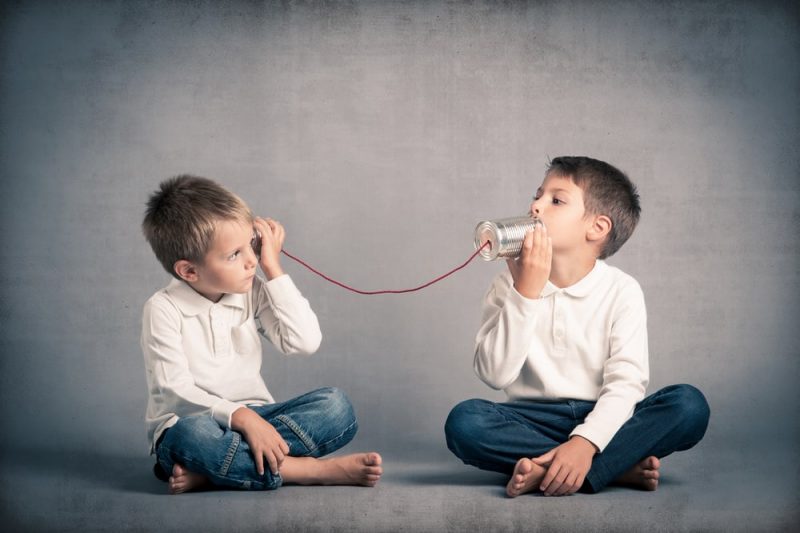The communication It is the conscious activity in which two living beings exchange information based on a shared code.
In the case of people, the communication process is not limited to the essential relationships for carrying out the minimum tasks, but rather communication schemes have been configured through different channels.
Comunication elements
The communicative circuit describes the way in which communication occurs. It is made up of different elements:
- Message. The information that is transmitted.
- Transmitter. Who sends the message.
- Receiver. Who receives the message.
- Code. Set of symbolic elements shared by the members.
- Channel. Physical medium through which information travels.
oral communication

When the message is received through the ear, it is said that there is a process of oral communication.
In oral communication, the channel is the air through which sound waves travel. In this case, the receiver (in addition to knowing the message that is reaching him) obtains some other things: the tone of voice, for example, is decisive for whether the sender is convinced of what he is affirming.
vices of orality
In many cases, the oral communicative process is carried out in the presence of both participants, so the sender can realize as he enunciates if what he wants to say is concretely reaching the receiver, or if the circuit is not taking place. successfully.
One of the most frequent reasons for the communication process to fail is that the sender and the receiver do not fully share the communication code: they do not know the same language or if the sender knows a much greater number of words than the receiver, for example.
speaking techniques
Although the process of sending messages orally is learned from the earliest years, when they reach adulthood many people choose to perfect it through some oratory techniques.
Some disciplines that need to spread messages to large numbers of people, installing in them some particular feelings, have the obligation to specially prepare the speakers for their task.
Examples of oral communication
- A phone call.
- The reading of the marriage vows.
- A political discussion.
- A meeting of parents in a school.
- A radio show.
- The presentation of a project.
- Conferences.
- A political speech in a campaign.
- The dictation of a class.
- A legislative debate.
- A job interview.
- A radio advertisement.
- A motivational talk in an organization.
- The narration of a story from a father to a son.
- The mediation of a judge between two parties.
- The presentation of a book.
- A sermon in a temple.
- The launch of a commercial product.
- The presentation of a thesis by a student.
- The presentation of a news.
Written communication
Written communication is the other example of a communicative process through words, in which people use a common code that is the graphic exposition of the morphemes used for words.
It happens on many occasions that the written communication is produced by a sender without knowing perfectly who the receiver will be, so the issues of shared codes are greatly reduced.
Literacy and improvement
Written communication is not learned by repetition or by growing up in a society that uses it, but, on the contrary, through a coordinated and organized process that is literacy: first you learn to read and then to write. In Western countries, the education system takes child literacy as one of its first priorities.
Like oratory, writing can be perfected in a much more complete way: the development of writing was oriented to various areas and people capable of choosing the right words are really recognized around the world.
Examples of written communication
- A story.
- A doctor’s prescription.
- A grocery shopping list.
- A letter.
- A fine.
- A fax.
- a poster
- A report.
- A car license plate.
- An email.
- a poster
- A bill.
- Most of the social networks.
- A graffiti.
- Newspaper.
- A magazine.
- A credential.
- A report.
- A poem.
- A novel.
